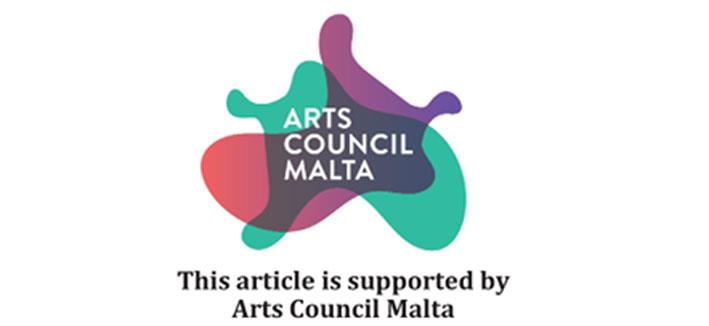I am thrilled to introduce the exhibition Body Language by three great artists, Patrick Dalli, Paul Scerri and Darren Tanti, curated by yours truly (my very first, to be held overseas), and which is being held at the Museo di Santa Chiara, in Noto, throughout April.
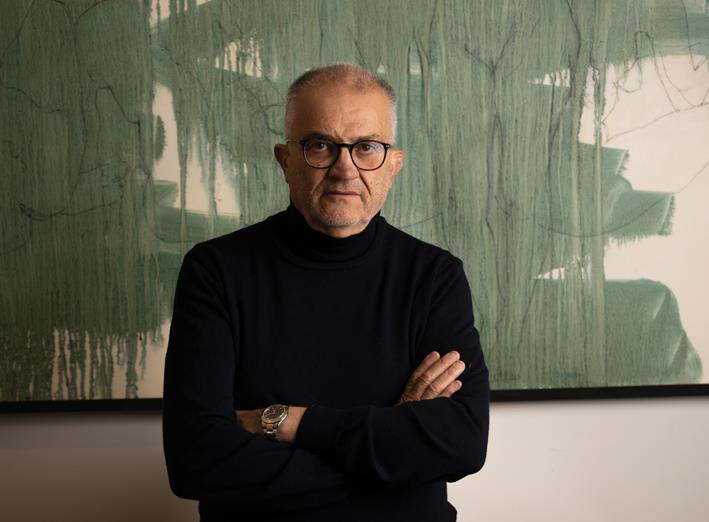
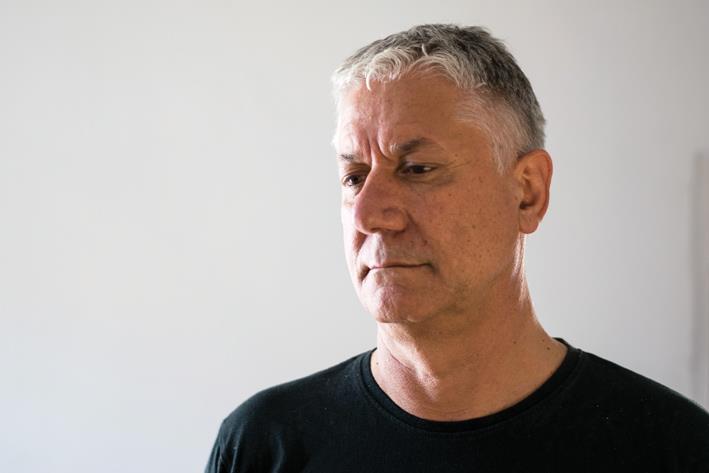
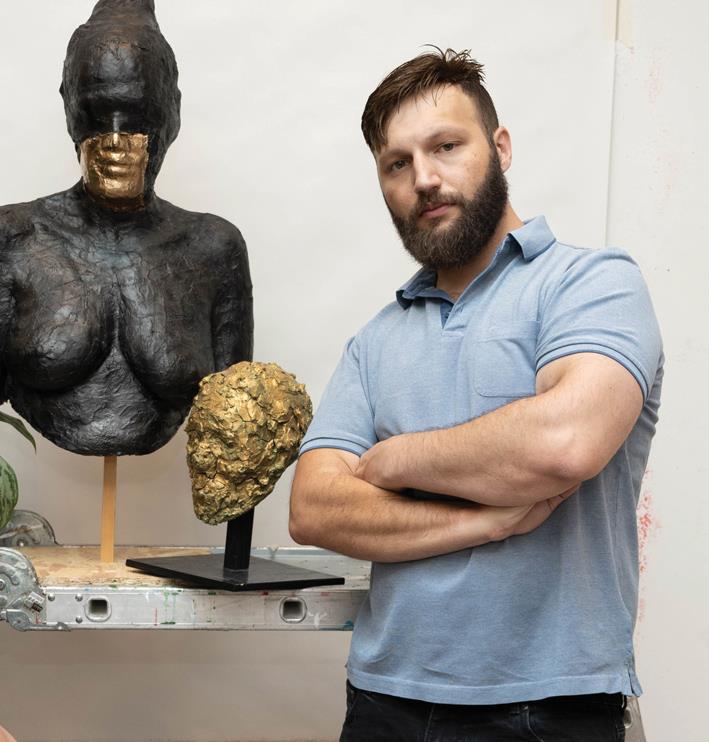
Patrick Dalli, Paul Scerri and Darren Tanti
The exhibition showcases the creations of these three distinguished Maltese artists, all revolving around the theme of the human body. Despite their distinct artistic styles, the common thread in their works is the human body, whether as the central focus of the composition, the narrative or the overarching theme.
The human body, an enduring subject of artistic exploration, has fascinated creators throughout the annals of history, from the primal strokes of cave paintings to the refined sculptures of classical antiquity and the boundary-pushing innovations of contemporary art. Its representation transcends mere physicality, delving into philosophical depths and existential inquiries that have captivated the minds of artists across cultures and epochs. Furthermore, various art forms, such as Body Art and Performance Art, have utilised the human body as a primary medium, challenging societal norms and perceptions while pushing the boundaries of artistic expression.
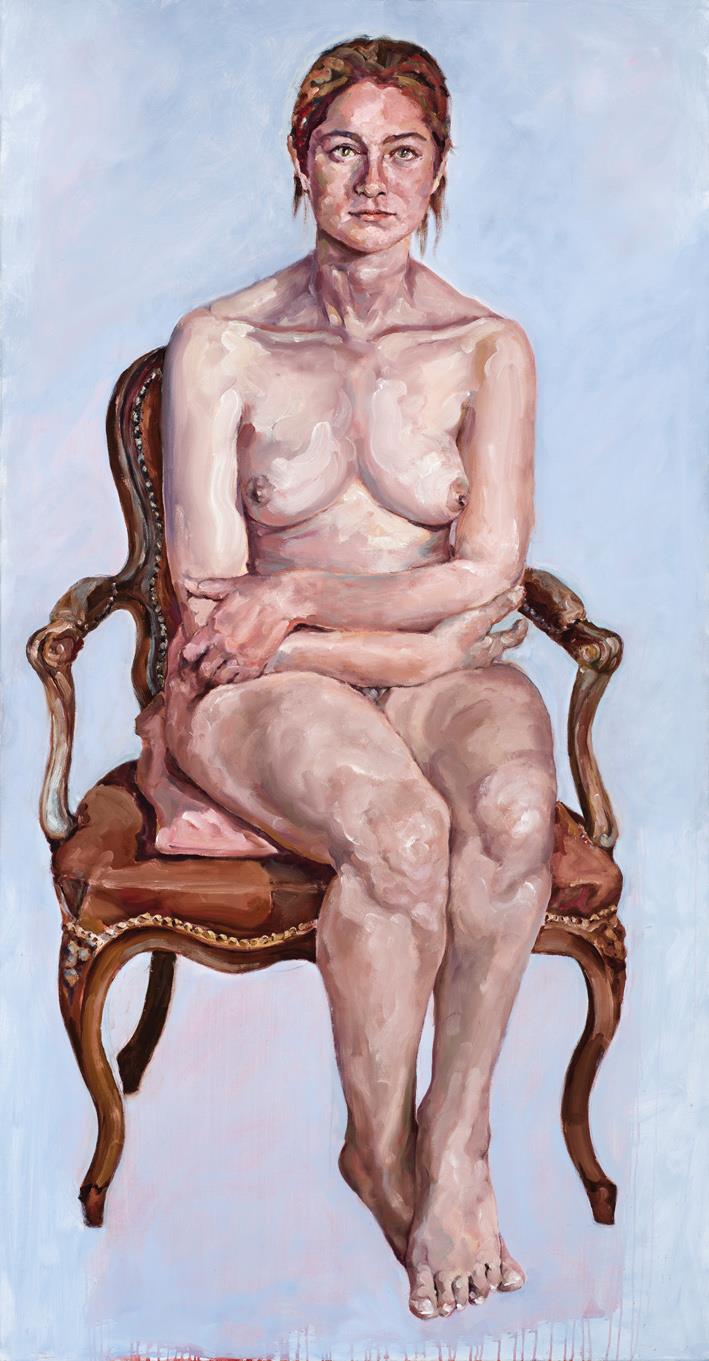
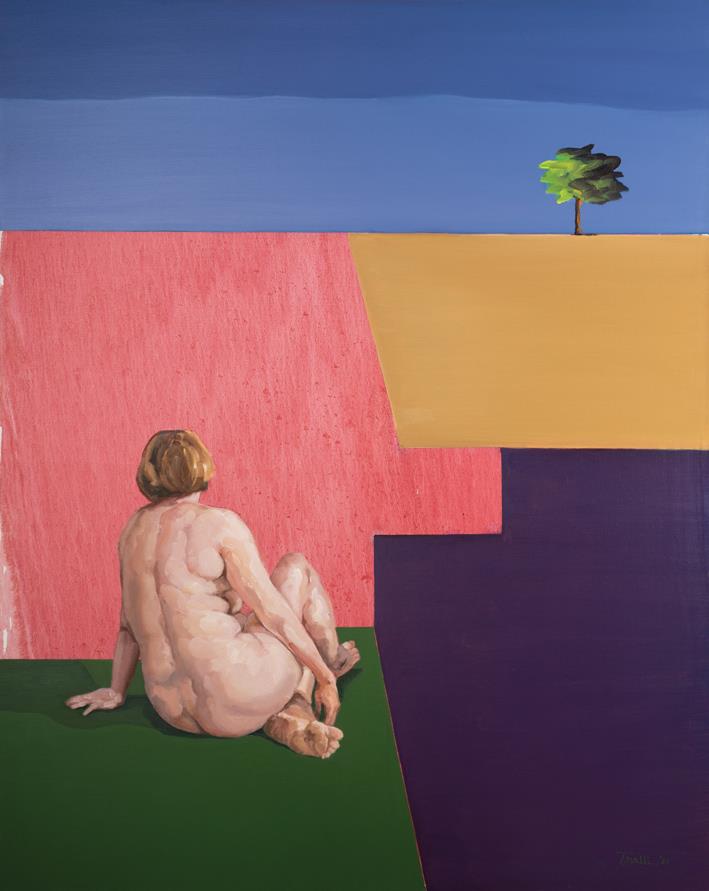
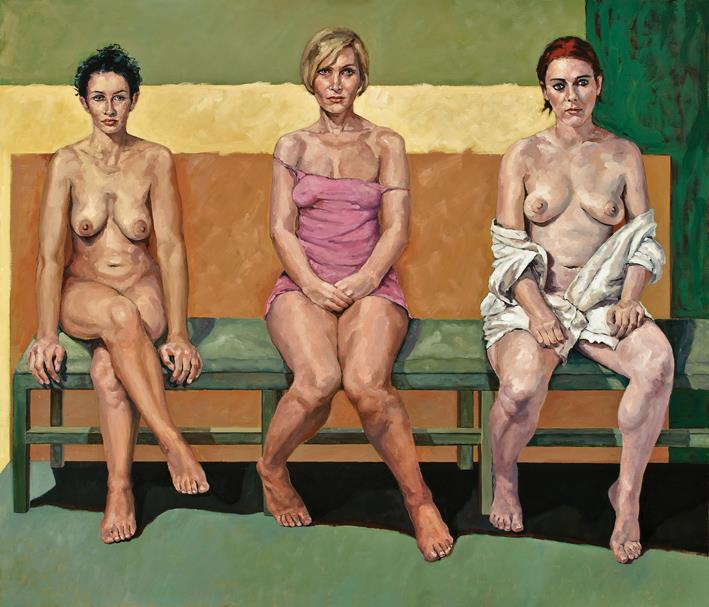
Body Art, encompassing practices like tattoos, scarification, body painting and piercing, transforms the human body into a canvas for artistic expression. Performance Art, exemplified by iconic works such as Imponderabilia (1977) by Martina Abramović and Ulay and Internal Scroll (1974) by Carolee Schneemann, places the human body in dynamic and often confrontational scenarios, inviting viewers to confront vulnerability, endurance and the boundaries of the self. Artists like Orlan, through radical cosmetic surgery, and Marina Abramović, through endurance feats like The House With the Ocean View, redefine the limits of artistic sacrifice and self-expression.
Controversy has often surrounded the depiction of the nude human body in art, from its origins in ancient Greek and Roman traditions to its resurgence during the Renaissance. Yet, artists strive to imbue their representations with intellectual and philosophical depth, elevating nudity beyond the sensual to evoke deeper contemplation and reflection.
These artworks by our three artists were not specifically created for this exhibition. Instead, the artists were brought together based on their typical and distinctive bodies of work. This is the first time where they are exhibiting together and the pieces featured in this exhibition span across numerous years, even decades.
Dalli, renowned for his large-scale nude paintings, captures the essence of human skin with a distinct painterly style, focusing on the pure form and essence of the human figure. His works, often untitled, reflect a deep interrogation of human existence, devoid of elaborate props and distractions, emphasising the raw humanity of his subjects. Vittorio Sgarbi describes Dalli's approach: "Artist Patrick Dalli observes them [his models] without compassion and without indulgence and establishes with them a dialogue from a distance. He interrogates them without assigning them meaning, he is only concerned with representing their bare existence."
In recent years, Dalli has taken notable strides in his artistic journey. During the Covid-19 epidemic, circumstances led him out of his studio to paint landscapes en plein air. In contrast to his nudes, his landscape works showcase a polished technique, marked by refined brushstrokes, devoid of the bold and expansive strokes seen in his nudes. Dalli's landscapes adopt a stylized approach, characterised by geometric shapes of block colours. A keen observer will immediately notice that these kinds of landscapes were already timidly present in some of Dalli's nude works where the minimal abstract background was already showing these block-coloured shapes, now forming his landscapes.
Dalli didn't stop there. In this exhibition, we can see two examples where the nude is now incorporated into his stylized landscapes. The compositions take on a surreal quality with varying planes and sizes of the figures. This integration evolves even more profoundly, as seen in a work displayed in Body Language. Here, a large figure, adorned in a plain black dress, initially appearing to dominate the landscape, becomes intricately infused into it. The disappearing sleeves and part of the arms create a mesmerizing blend of the figure and landscape.
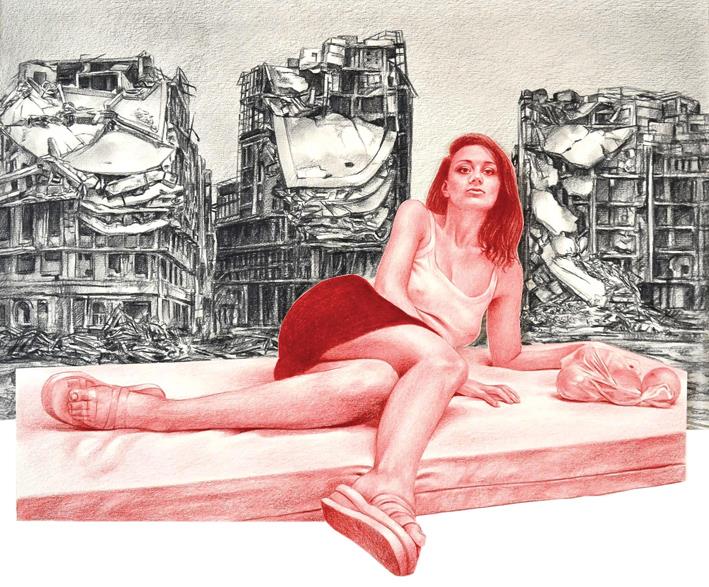
Tanti's works present a contrast to Dalli's, not only in execution but also in composition. This contrast is particularly evident when comparing Dalli's more stark and block-coloured backgrounds with the intricate contexts in which Tanti places his figures. All of Tanti's works in this exhibition, except for two, were part of his magnum opus exhibition held in 2022, titled Inaction is a Weapon of Mass Destruction. The exhibition delved into how we experience war as second-hand consumers, from the comfort of our homes and the manipulation of news and information.

Tanti's nudes, such as those within the ravines like Eden, The three Bombs and ...and now it is time to remedy, (the latter of which was exhibited in the APS Mdina Cathedral Art Biennale 2023), navigate a fine line between nudity and nakedness, influenced by the contexts in which he situates them, creating an almost collage-like feeling. Some of his nudes evoke discomfort for the viewer, a shock reminiscent of the stir caused by Édouard Manet's Le Déjeuner sur l'Herbe.
Since the early stages of his career, Tanti's works have been infused with narrative and philosophical reflections, as evidenced by his participation in the Venice Biennale as part of the Maltese Pavilion Homo Melitensis in 2017, where in his artwork L'Annalisa from 2011, we see a young woman portrayed surrounded by props emphasising her Maltese identity, yet placed in a surreal context through the use of a Byzantine halo and chiaroscuro painterly technique, highlighting the contrast between the secular and the spiritual.
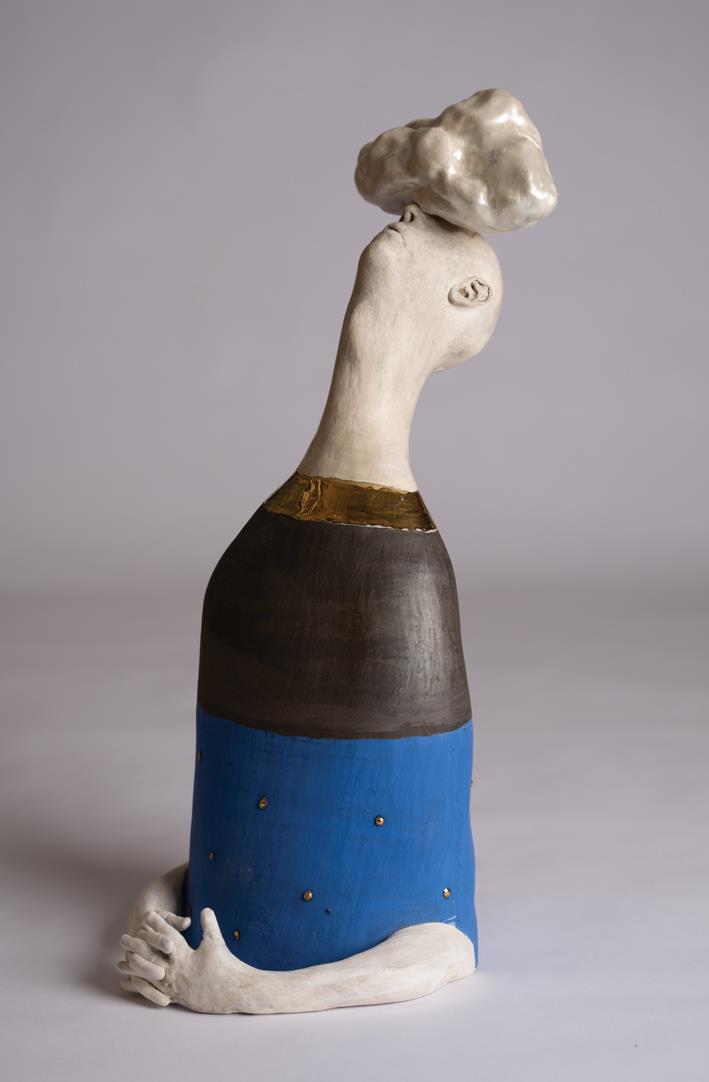
Scerri's sculptures are imbued with symbolism, inviting contemplation on life - one's experiences and the inherent absurdity of existence. Executed with meticulous attention to detail and perfection, each work carries deep meaning. Despite the depth of their narratives, there's an immediate sense of profound silence in his sculptures. Many of his figures exude humility, creating an atmosphere akin to standing within a congregation of monks.
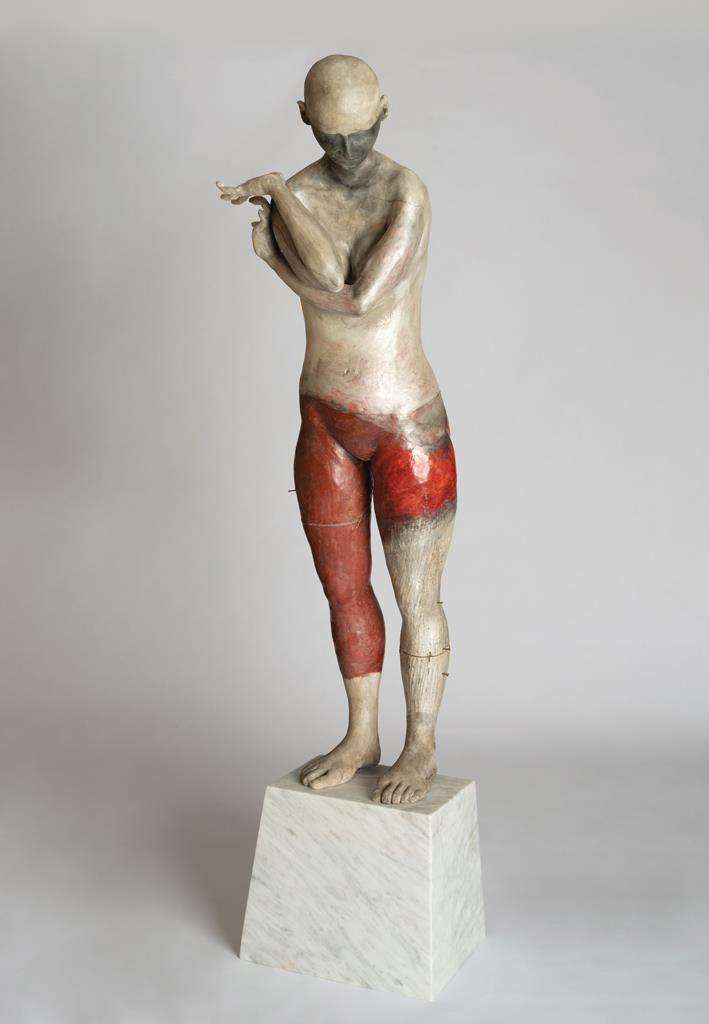
The majority of Scerri's standing figures are presented in the nude or wearing minimal clothing, often just a sleeveless top. Each figure is accompanied by a "prop", an item that serves as a conduit for the story or stories encapsulated by that particular sculpture. Facial features are deliberately minimal, with small eyes and lips, and his figures are often bold, emphasising the focus on the object held by the figure, which constitutes the essence of the artwork.
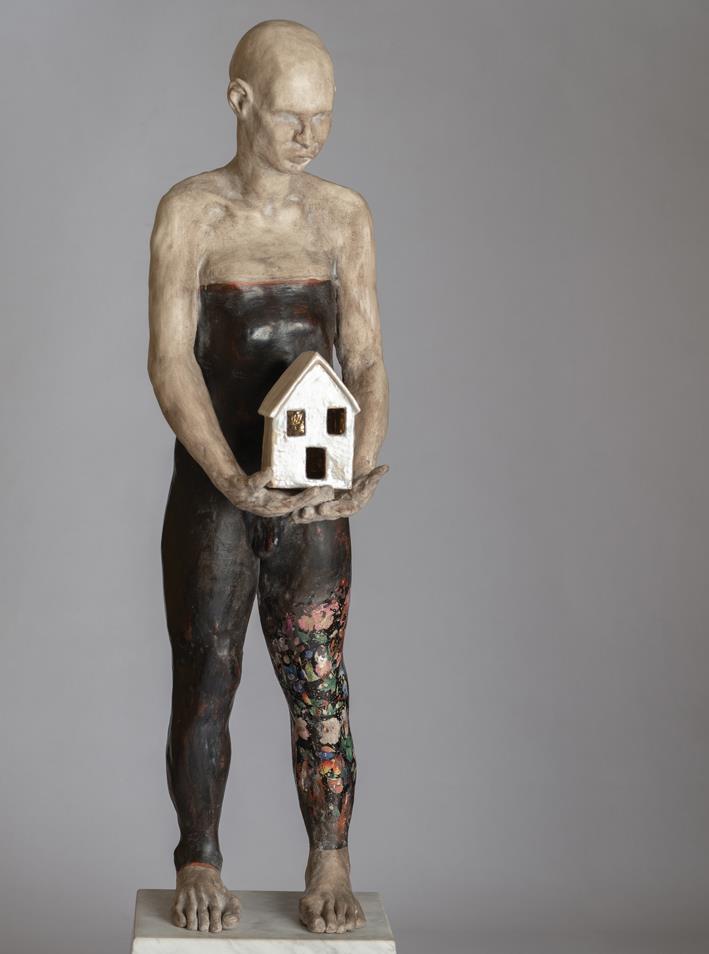
A captivating series of figures within this exhibition consists of busts enveloped in tunics, each carrying pillow-like clouds - a symbolic representation of dreams. These five works serve as a preview to his upcoming major exhibition, dedicated to the exploration of dreams.
In That House, we encounter a full figure holding a diminutive house - whether a dollhouse, a birdhouse or simply a miniature dwelling is open to interpretation. This piece, intertwined with enigmatic allure, invites viewers to embark on a mental journey to unravel the underlying story. If one were to seek clarification from Scerri, the response might likely be met with his whimsical smile and a simple directive to decide for oneself the meaning it may hold.
Body Language serves as more than a mere exhibition of artistic prowess; it is a testament to the human experience, celebrating the technical mastery and emotional resonance of the human form. Through their diverse expressions, Dalli, Tanti and Scerri invite viewers to forge a deeper connection with their own humanity, fostering empathy and understanding in an increasingly fragmented world. As spectators engage with the artworks on display, they are prompted not only to appreciate the beauty of the human body but also to reflect on the shared experiences and universal truths that bind us all together.
The exhibition is on until 27 April, at Museo Santa Chiara, Corso Vittorio Emanuele, 149 96017, Noto, Sicily.
